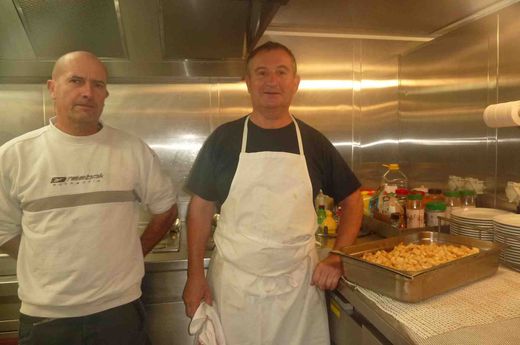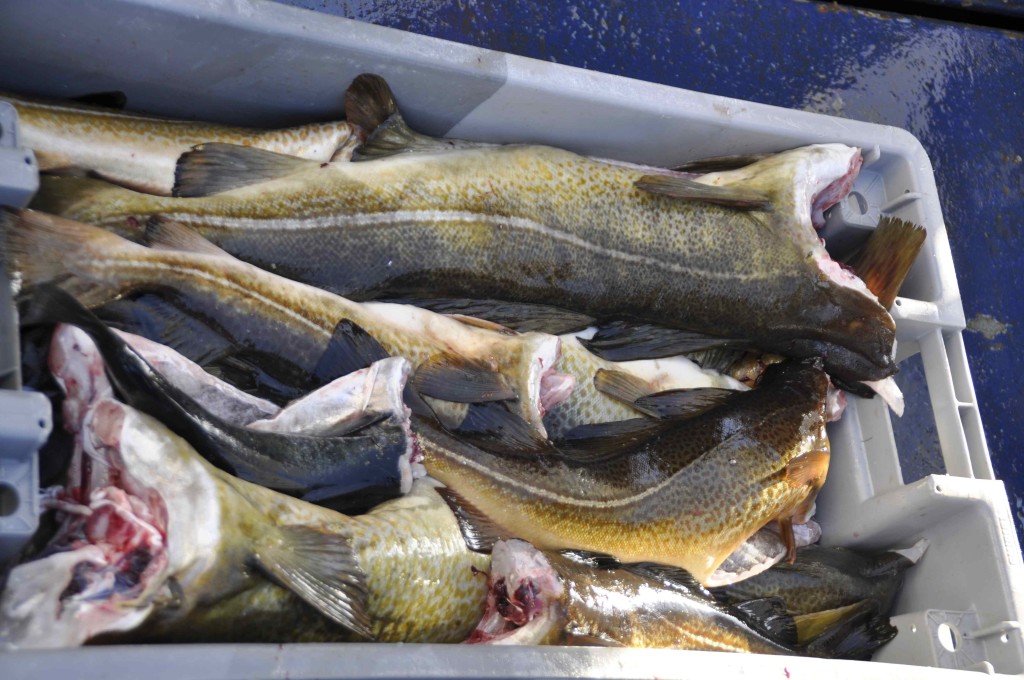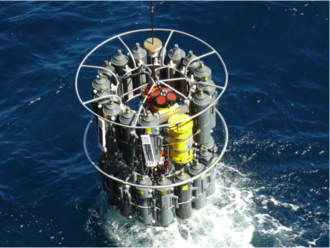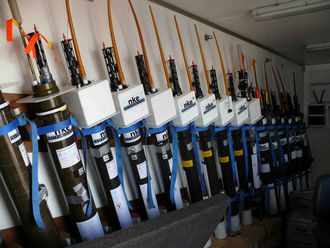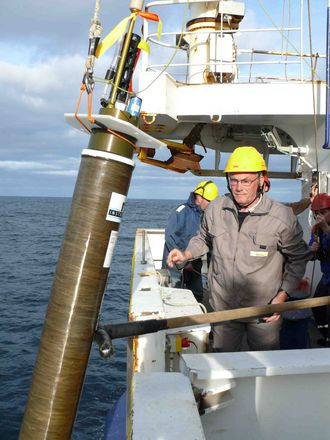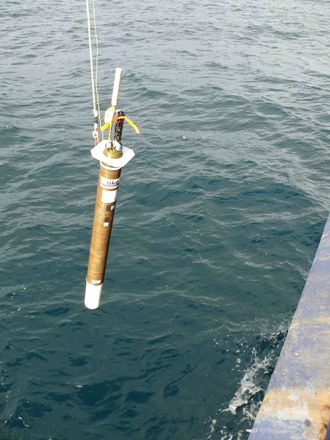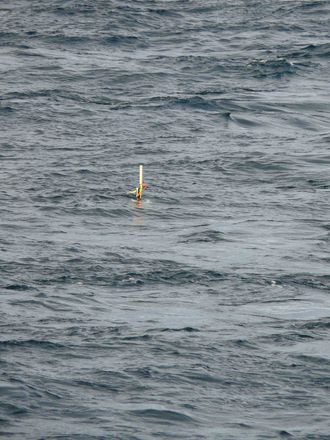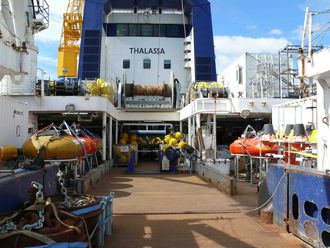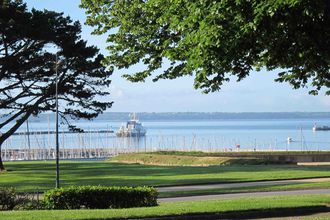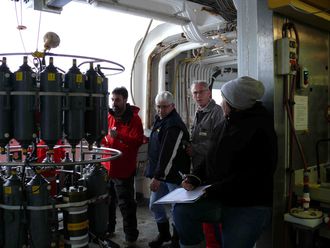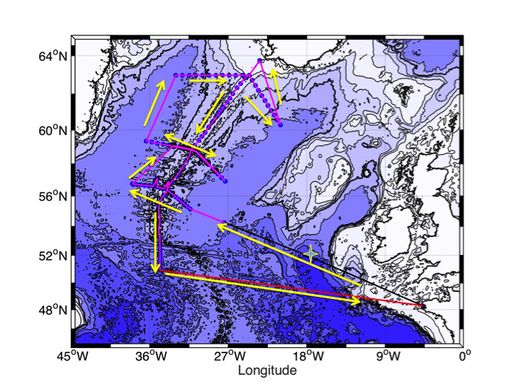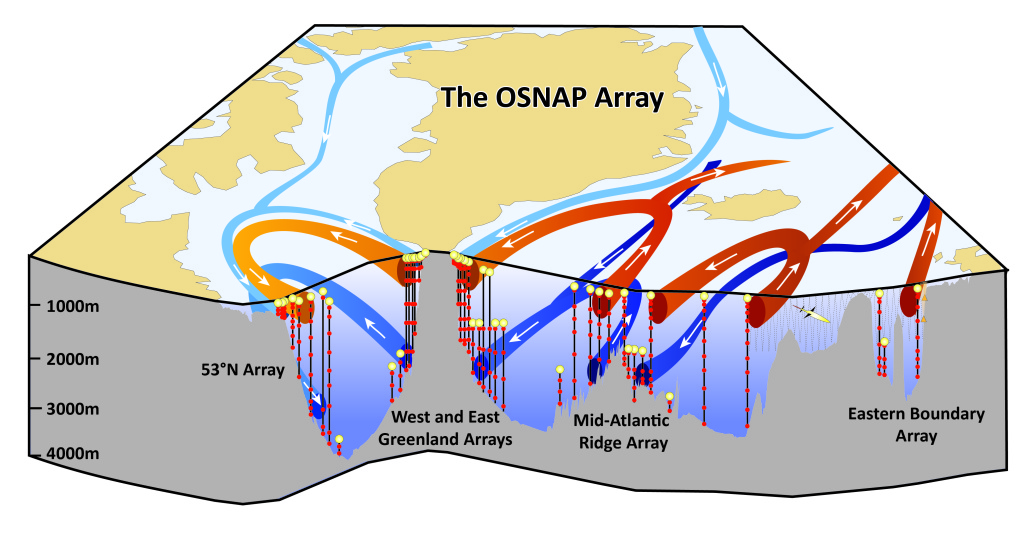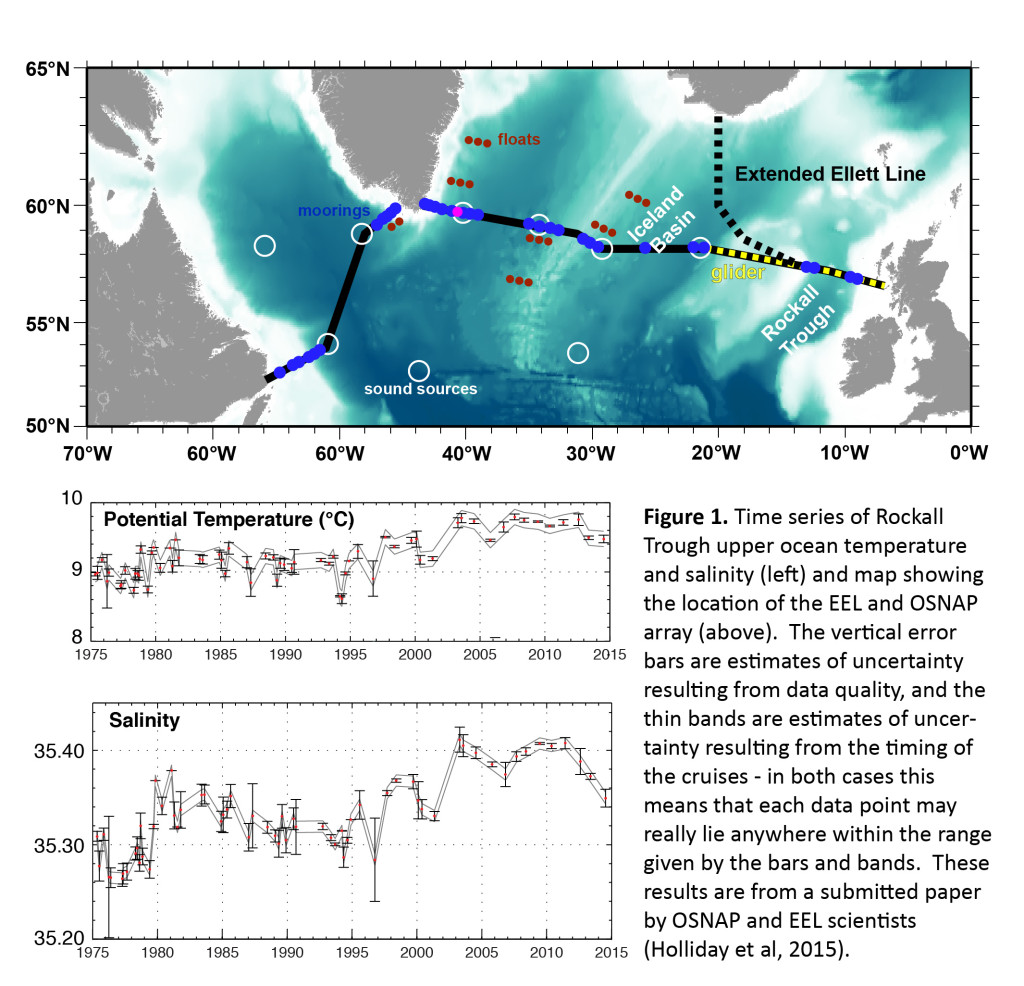By Camille Lique
So. Here was the plan.

Map of planned stations for the RREX cruise. -Ifremer/RREX/V. Thierry
Fairly simple on the paper. Leaving Brest on June 6th. Five days of travel to reach the South CTD section (each blue dots is one of the ~120 CTD stations). Then going to the middle section, do one path to deploy the moorings (we have 7 of them to deploy on the section) and then one path back for CTD operations, travel North to the third section, and end up with the section along the Reykjanes Ridge. Then 5 days of travel back to Brest, to arrive in the wee hours of July 10th. This looks simple but probably took days of thinking and work for our Chief Scientist, Virginie Thierry, back in her office at Ifremer. It was her work to choose the location of each station, compute the travel time from station to station, and try to optimize everything to make the best of our time at sea and come back with as much measurements as possible.
So, this was the initial plan. Yet, now, lets play it real. Once at sea, a few other things need to be considered:
- We have not been so lucky with the weather so far. As we are sitting just along the storm track at the moment, we have been hit by several depressions (and their associated stronger winds and higher waves), some stronger then other. One might ask “what did you expect, going to this region?” but that’s a different problem. The ship is quite big and copes quite well with bad weather (although everything becomes increasingly challenging when the waves are higher, including simple things like eating, walking around the ship or sleeping…). Yet, moorings cannot be deployed when the wind and/or waves are too drastic. We can however carry on with CTD operations in almost any weather (up to some limit, which we were not far from reaching when we’ve had winds of 45 knots). All of that add strong constrains on what can be effectively done during a given day.
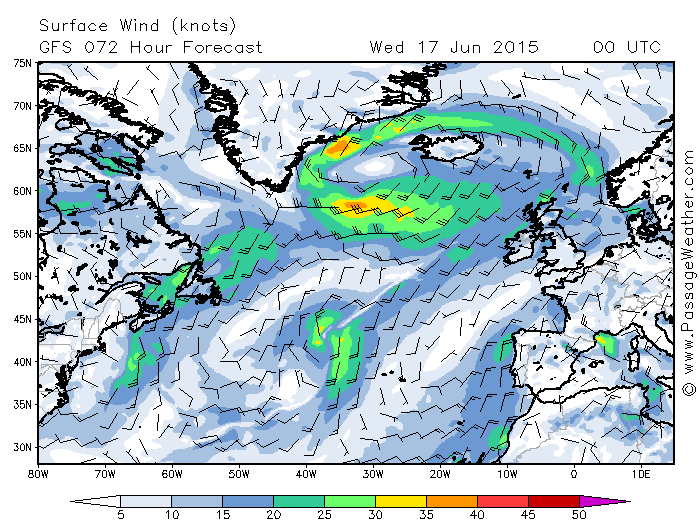
Weather forecast for June 17. The figure shows a example of one of the depression we have experienced so far, with winds higher than 30-35 knots.
- Almost immediately after the CTD package comes out of the water at every station, the data are quickly pre-processed and examined. This is great help in spotting where interesting things happen (and hence where we should do more observations). Other parts of the sections can, on the other end, be done with less resolution (i.e. less stations) without too much loss of the information we want. Although very valuable, all of that again requires some adjustment to the original plan.
- At sea, nothing takes same time twice. A given travel distance can be done faster or slower, depending on the weather, the direction of the winds and waves, and other random factors. Similarly it is sometime difficult to estimate the time that a given operation would take: for instance, recovering our VMP (microstructure profiler) can take between 5 minutes (when everything goes really well) and 30 minutes (when it becomes more challenging). This means again that all the initial calculations (made with a constant travel speed between two stations) need to be adjusted.
- Add as a final constrain that we always need to move forward. No time for reflection, second thought, or to explore different options.
So, what did happen so far? Well, as expected, the plan has been adjusted… So far we have performed the south CTD section, made only one path along middle section, doing some CTD casts and deploying 3 moorings (leaving the remaining moorings for the way back, hoping to be more lucky with the weather at that time), and yesterday, we have headed north to the third section, traveling on the eastern side of the ridge instead of the western side as initially thought.
By now, we’ve all got used to see Virginie running around the ship, going from lab to lab, saying “I’ve just printed the new schedule!”. And everyone can see that, behind her constant smile and enthusiasm, some decisions have been a bit of a headache to make (while everything seems a bit of a relief when we have managed to stay on schedule for more than a few hours). And we all start our work shift by asking people from the previous shift how the plan has been adjusted. Yet, and most important, we have been constantly progressing so far and as much work as we could has been carried out. We’ll have to wait until the last days to see if the jigsaw is complete!
As a final note: I start to realize that being a Chief scientist on a scientist cruise is not that different from being the team manager of a football team. Everyone on the ship has an opinion on which strategy should be followed… Yet, everyone knows deep inside that we’re quite lucky that we don’t have to make any of the decisions.
